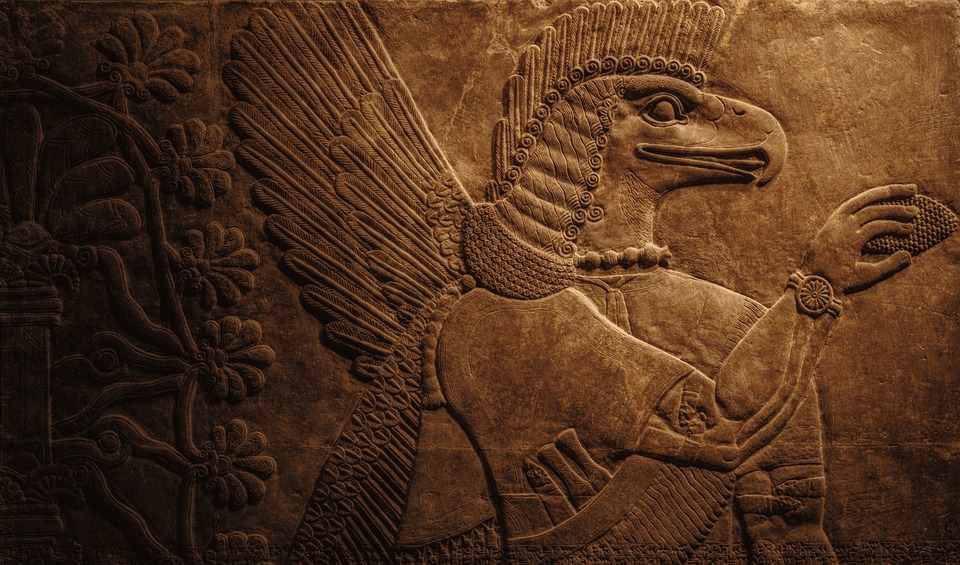
The Assyrian Empire was one of the most influential ancient empires in history, spanning over 300 years from the 9th to the 6th century BCE. During this time, the Assyrians interacted with several other ancient civilizations, including Babylon and Egypt. In this essay, we will explore the nature of these interactions and how they shaped the political, economic, and cultural landscape of the ancient Near East.
Before delving into the specifics of the Assyrian Empire’s interactions with Babylon and Egypt, it is essential to provide a brief historical background of each of these civilizations. Babylon was an ancient city-state located in modern-day Iraq, famous for its Hanging Gardens, Tower of Babel, and its legendary ruler Hammurabi, who established one of the earliest sets of written laws in history. Babylon rose to prominence in the 18th century BCE, and its influence spread throughout Mesopotamia over the centuries that followed.
Egypt, on the other hand, was one of the most prosperous and powerful ancient civilizations in the world. Located in the northeast corner of Africa, along the banks of the Nile River, Egypt was known for its monumental architecture, such as the pyramids and temples, and its sophisticated writing system, known as hieroglyphics. Egypt was ruled by pharaohs, who were considered to be divine beings and had absolute power over the people.
The Assyrian Empire, which was located in the northern part of Mesopotamia, was a militaristic state that relied heavily on its army to expand its territory and maintain its power. The Assyrians were known for their brutal tactics, which included the use of siege warfare, mass deportations, and the flaying of their enemies. Despite their violent reputation, the Assyrians were also known for their administrative prowess and their ability to govern their vast empire effectively.
Now that we have established some historical context let us explore how the Assyrian Empire interacted with Babylon and Egypt.
Assyrian-Babylonian Relations
The relationship between Assyria and Babylon was complex and multifaceted, marked by periods of cooperation and conflict. At times, the two powers were allies, while at other times, they were bitter enemies. One of the main sources of tension between the two civilizations was their shared cultural heritage. Both Assyria and Babylon were part of the larger Mesopotamian civilization, which had a long and rich history dating back to the Sumerians.
The Assyrian Empire first emerged as a major power in the 9th century BCE under the rule of King Ashurnasirpal II. Ashurnasirpal II launched a series of military campaigns that expanded the Assyrian Empire’s territory, bringing it into conflict with neighboring powers, including Babylon. One of the earliest recorded clashes between the Assyrians and Babylonians took place in 853 BCE when the Babylonian king Marduk-zakir-shumi II rebelled against Assyrian rule. Ashurnasirpal II responded by launching a military campaign that resulted in the capture of Babylon and the installation of an Assyrian puppet king on the Babylonian throne.
Despite this initial conflict, the Assyrians and Babylonians occasionally found common ground. For example, in the 8th century BCE, the Assyrian king Tiglath-Pileser III and the Babylonian king Nabonassar entered into an alliance to fight against a common enemy, the kingdom of Elam. This alliance was successful, and the Elamites were defeated, allowing both Assyria and Babylon to expand their territory.
However, tensions between the two powers remained, and in the 7th century BCE, the Babylonians rebelled against Assyrian rule once again.
The Assyrians were not content to let Babylon regain its independence and launched a series of military campaigns against the Babylonians to bring them back under their control. This led to a long and bloody conflict between the two powers that lasted for decades.
One of the most significant events of this conflict was the Battle of Carchemish in 605 BCE, which pitted the Babylonians and Egyptians against the Assyrians. The Assyrians were defeated, and their empire began to crumble. This marked the end of the Assyrian Empire’s dominance in the ancient Near East and paved the way for Babylon’s rise to power under the Chaldean king Nebuchadnezzar II.
Assyrian-Egyptian Relations
The relationship between the Assyrian Empire and Egypt was marked by a long-standing rivalry that played out over several centuries. The two powers were geographically distant, with Assyria located in Mesopotamia and Egypt located in northeast Africa. However, they were both major powers in the ancient Near East and often came into conflict over control of strategic territories.
One of the earliest recorded clashes between the Assyrians and Egyptians took place in the 8th century BCE when the Assyrian king Shalmaneser III launched a military campaign against the kingdom of Israel, which was allied with Egypt at the time. The campaign ended in a stalemate, with neither side able to claim a decisive victory.
Tensions between the Assyrians and Egyptians continued to simmer over the centuries that followed, with both powers jostling for control of the Levant, a region that includes modern-day Israel, Palestine, and Lebanon. This led to a series of conflicts, including the Battle of Raphia in 217 BCE, which pitted the Seleucid Empire, a successor state to the Assyrian Empire, against the Ptolemaic Kingdom, which controlled Egypt at the time. The Seleucids were victorious in this battle, which marked the beginning of their dominance over the Levant.
Conclusion
In conclusion, the Assyrian Empire interacted with several other ancient civilizations, including Babylon and Egypt, over the course of its history. These interactions were often marked by conflict, with the Assyrians relying heavily on their military might to expand their territory and maintain their power. However, there were also periods of cooperation and alliances, such as when the Assyrians and Babylonians united to fight against a common enemy. Ultimately, the Assyrian Empire’s brutal tactics and expansionist ambitions led to its downfall, paving the way for the rise of other civilizations in the ancient Near East.







